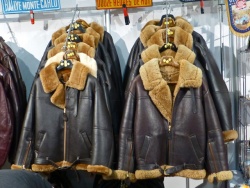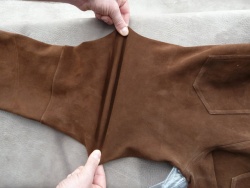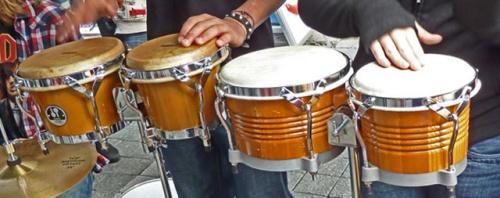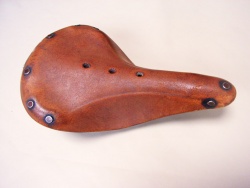Haptic evaluation of leather surfaces
Contents
Haptic of leather
Haptic designates the tactile sense (feel) as well as the perceptible properties of an object regarding its material characteristics, surface structure and consistency.
The feel of a leather is also described with the "grip" of a leather. "A buttery napa leather," a "waxy" grip of a fine aniline leather, the "plastic-like" grip of strong coated leather, or the "parchment-like" grip of an old, dry, thin leather are all descriptions of the feel of a leather. Also, the stiffness, elasticity, warmth and coldness of a material are sensed haptically.
A good quality leather feels warm and soft.
Softness of leather
Leather is a fibre mesh of infinitely many small fibre connections. The looser these are, the softer the leather is. The flexibility of these collagen fibres also influence the softness of a leather. The tanner can influence the softness by greasing. But in almost every step of tanning, the tanner influences the strength of the final product. An embossed or ironed leather will always feel more firm as un-embossed and un-ironed leather. Softening and optimal greasing ensures extra soft leather. Any tannins applied also influence the softness of the final product. If a leather is not tanned, but only dried, it is then called parchment, which is very hard and stiff.
The firmness of these fibres depend on the animal species. Due to its structure, a crocodile leather is always stronger than lambskin. The fibre connections are also different within a skin. They are more loose on the flanks the leather than in the middle area.
Buttery soft lamb and elk napa leather gloves (Elk skin leather from Pineyard - MUD GbR).
Soft lambskin jacket and stretchable stretch leather.
Soft leather
Soft leather is an unprotected or undefined term and is used for all types of leather to describe the softness of leather. In principle, an object made of soft leather should be softer than the typical feel of such leather objects.
Strength of the leather
There are certain areas of use, where strength or hardness of leather is desired. Leather belts or leather straps and leather soles should not be labile but solid. A leather gun holster or a leather dice cup should also be firm.
The firmness of a leather is achieved by pressing, less fats and oils and / or by ironing and / or heat. If a leather is wet before pressing, the leather fibres become more adhesive and it becomes even firmer. It can be made so firm, that it breaks when overstretched. A denser fibre structure and the right choice of tannin also affects the hardness or strength of leather.
Parchment is untanned, dried, hard animal skin. For making drums, this effect is important for the sound.
Solid leather straps, drums, leather case or saddle.
Abundance of leather
The abundance of leather describes how massive the leather feels. The leather is "filled" by large-scale retanning substances and then feels more massive.
Additional information

















 a kotori web solution
a kotori web solution